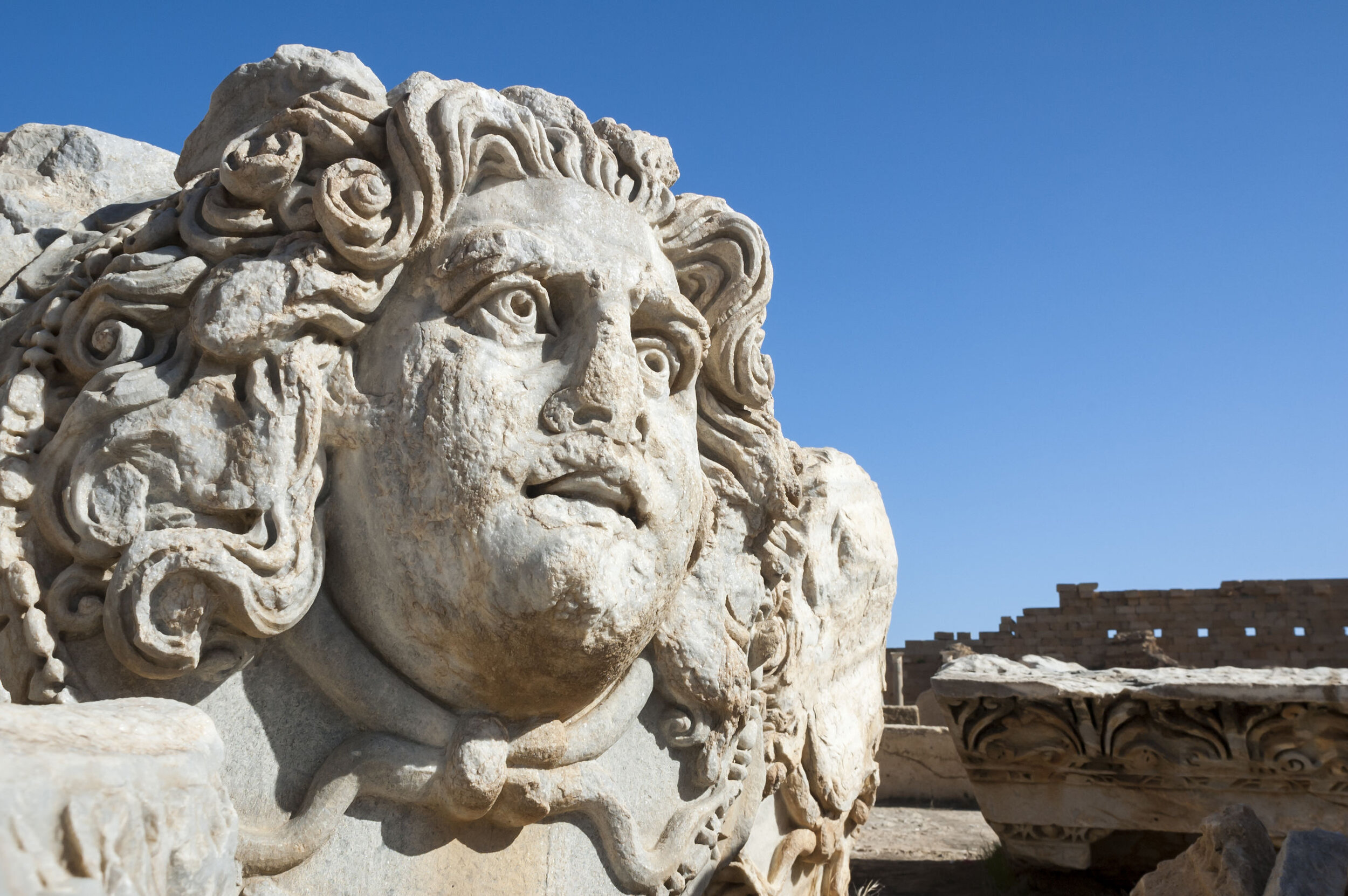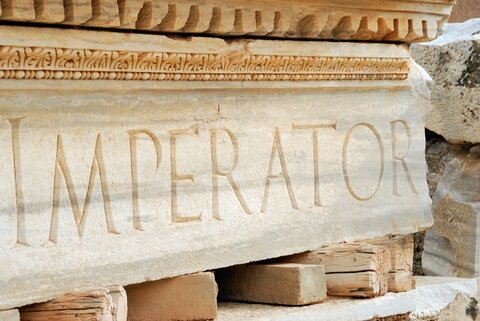roman period.

Head of Medusa, Severan Forum, Leptis Magna
The Romans in Libya
After the third Punic war, Rome established itself as a powerful entity in the North African continent. This left Libya, which Alexander the Great had initially annexed to the Greek empire and later comprised part of the Ptolemaic Kingdom under the Ptolemaic rule, finding itself sandwiched between powers fighting over their economic, trading and territorial interests. The Romans had defeated the Carthaginians in the third punic war but they did not intend to colonize or control the territory and returned to Rome. However in 74 BC, the last Ptolemaic ruler, Ptolemy Apion bequeathed control of Cyrenaica to Rome which resulted in most of what would now be present day Libya, becoming a Roman province1.
Ancient Roan Triumphal Arch of Septimius Severus at Leptis Magna, Libya
Cyrenaica was turned into a senatorial province of Rome in 20 BCE2. Similarly Fezzan, a vast desert, but a geographically important region for trade, came under the control of Rome between 5th century BCE to 5th century AD and it later formed a part of Rome’s Africa Nova province3. Fezzan was largely a client state of the Roman empire and even though there was an ongoing civil war the three regions of Libya - Tripolitania, Cyrenaica and Fezzan remained unscathed and free from the conflict, mainly because these three regions produced food for the Roman empire4.
Sabratha ruins, by the Mediterranean
The Romans transformed Libyan cities and their infrastructure into the way cities of Rome were designed and built. The culture, customs and especially the population of Libya became Romanized, however Tripolitania and Cyrenaica remained unaffected. These two cities had strong punic and Greek marks in their culture and customs5.
In 429AD Rome lost control of Libya when a Germanic tribe known as the “Vandals” invaded. However, between the Roman rule of Libya and the Vandal’s invasion something new emerged in the form of Christianity, and Cyrenaica was the first to embrace it6.
Ancient Roman Triumphal Arch of Septimius Severus at Leptis Magna, Libya
Roman Ruins at Leptis Magna - Unesco World Heritage Site
FOOTNOTES.
Oyeniyi, Bukola Adeyemi. The History of Libya. Santa Barbara, CA: Greenwood, an imprint of ABC-CLIO, LLC, 2019.
ibid.
ibid.
ibid.
ibid.
ibid.




